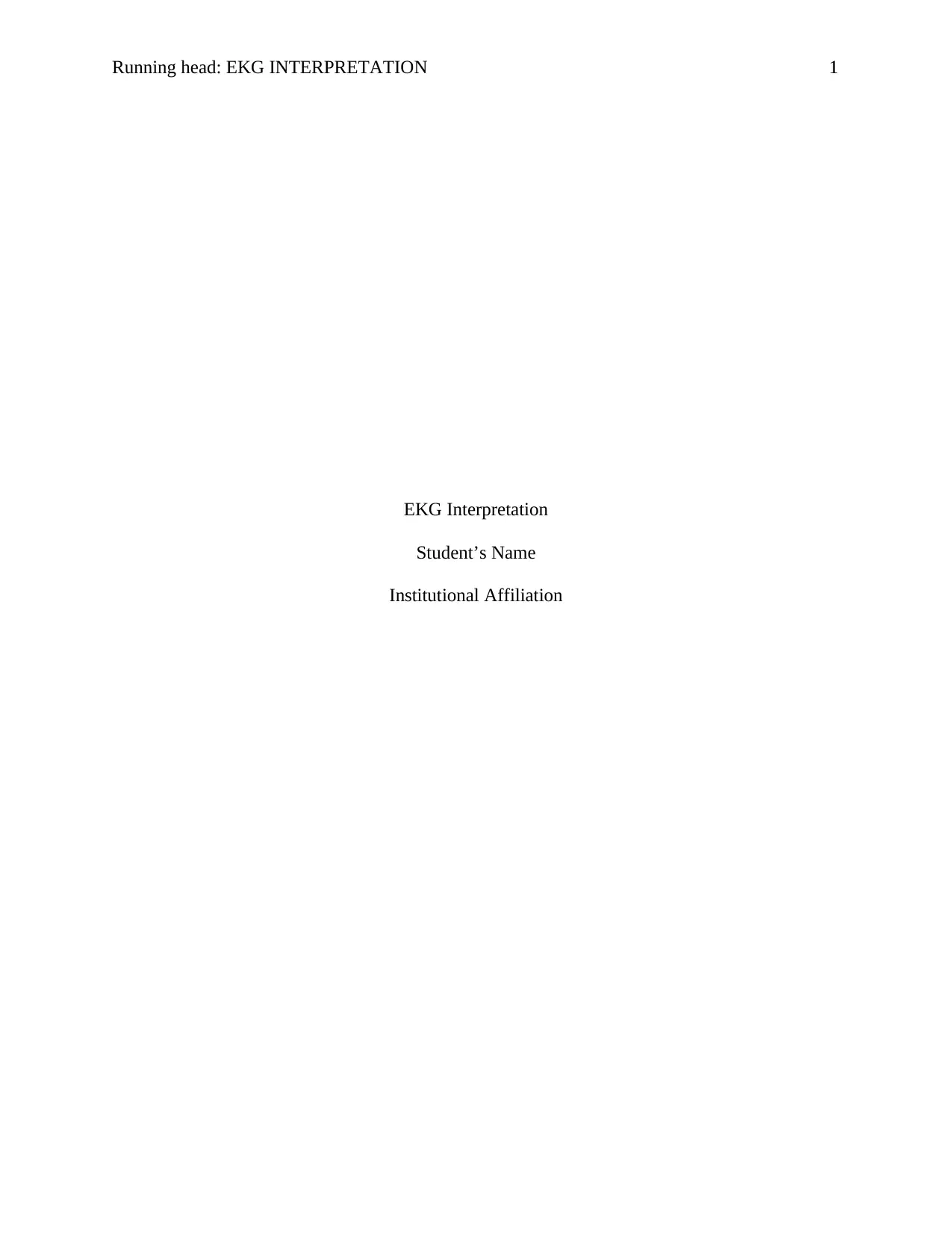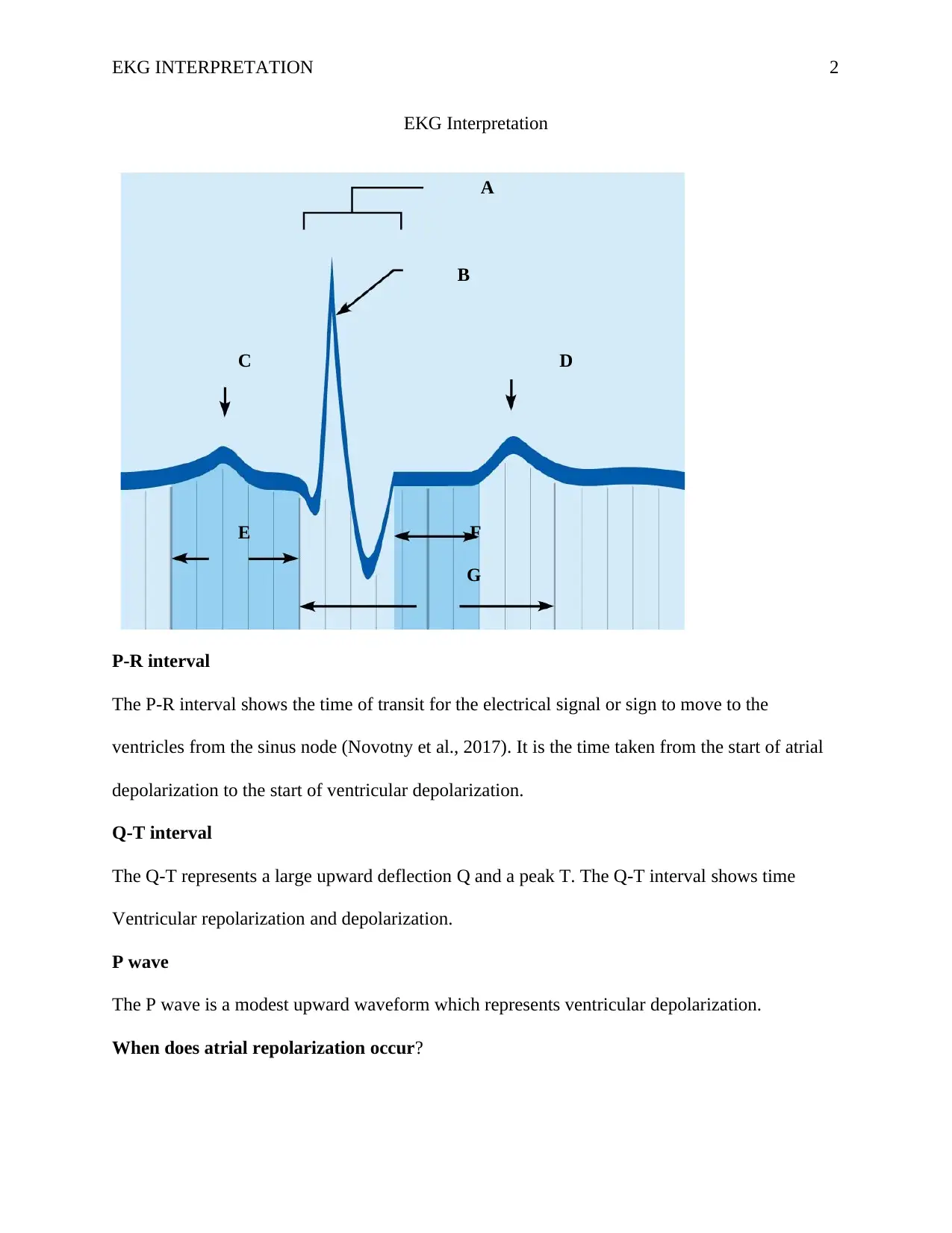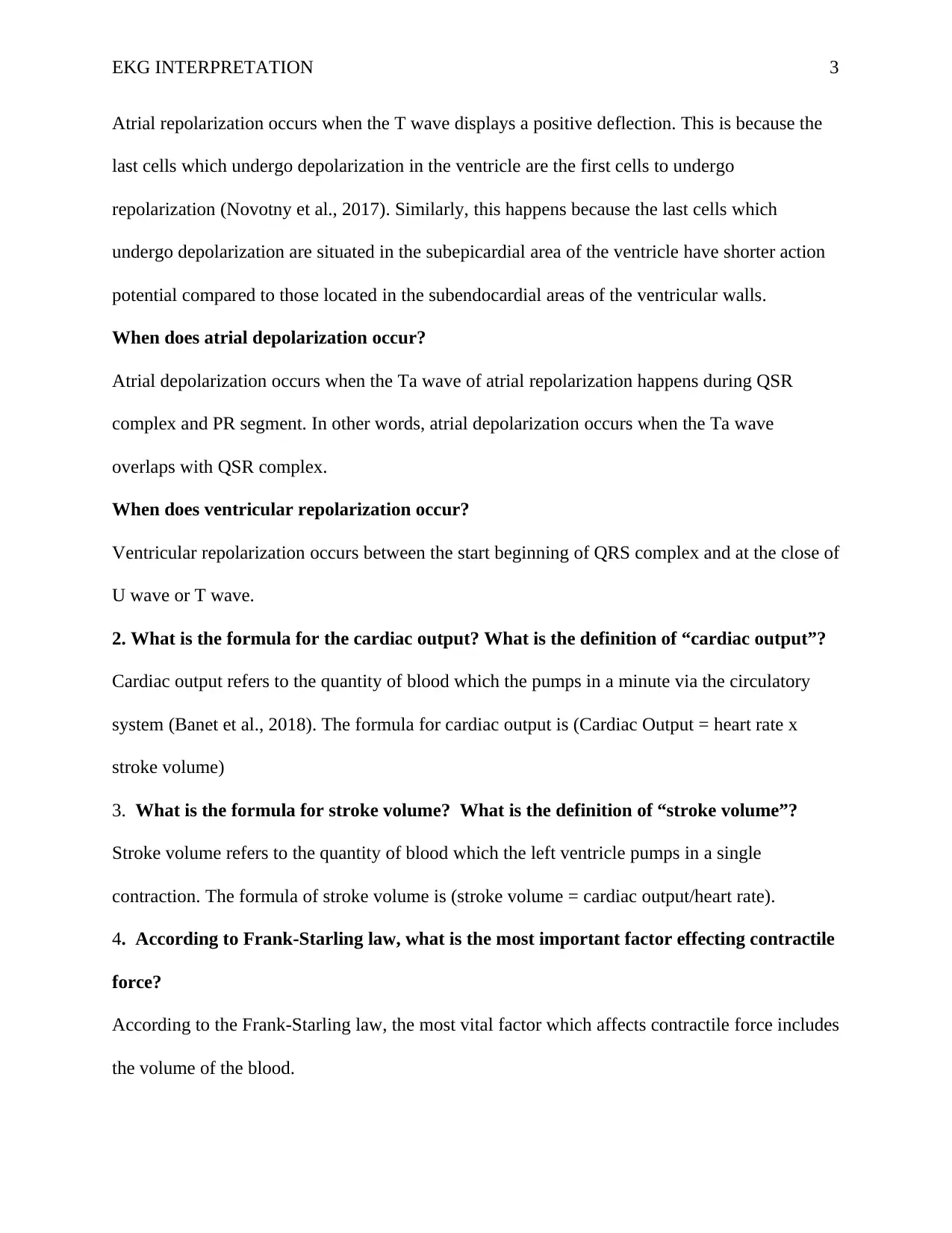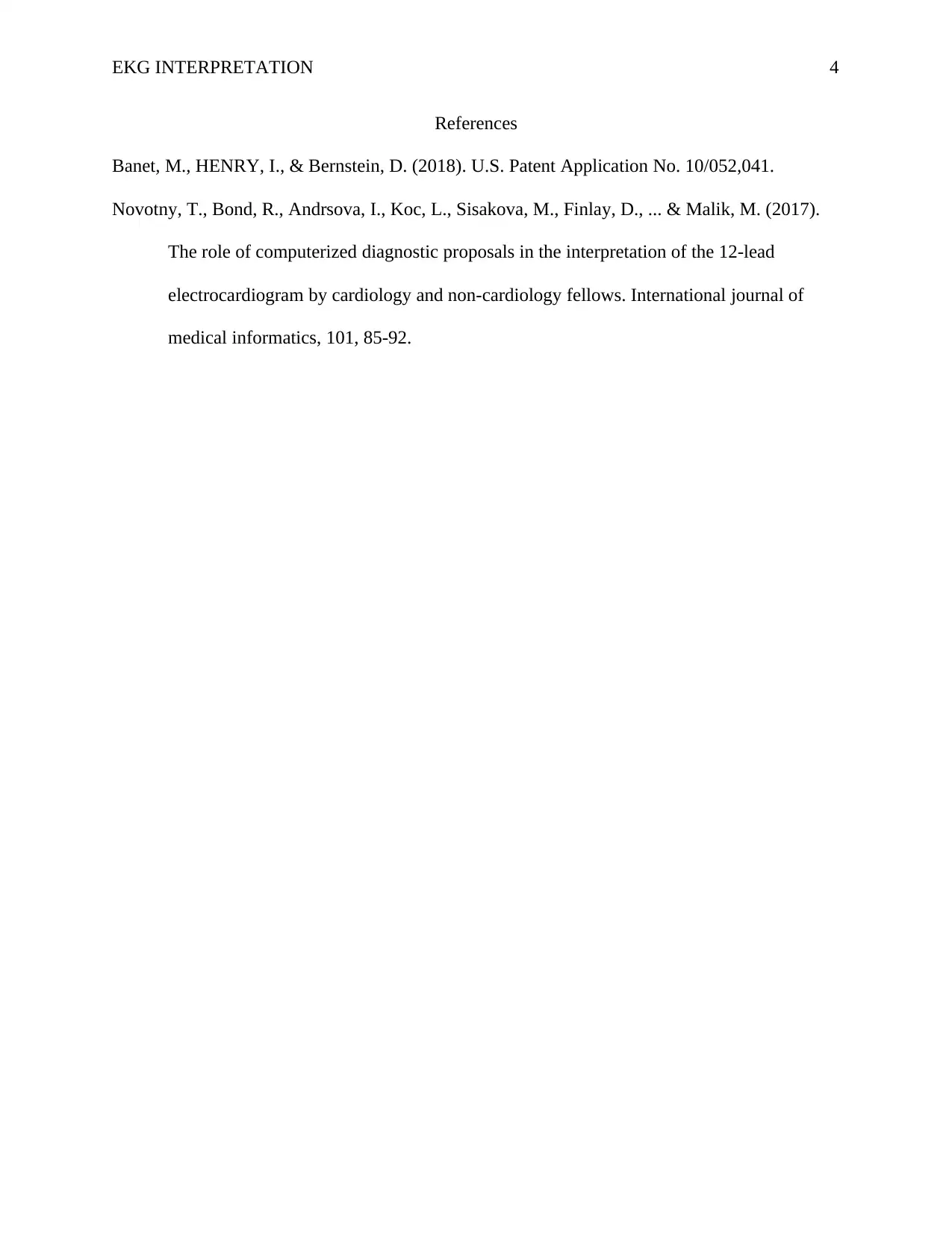Comprehensive EKG Interpretation: Cardiac Function and Analysis Report
VerifiedAdded on 2023/06/05
|4
|511
|413
Homework Assignment
AI Summary
This assignment provides a comprehensive overview of EKG interpretation, focusing on understanding cardiac function through the analysis of EKG components such as P-R intervals, Q-T intervals, and P waves. It explains atrial and ventricular depolarization and repolarization, detailing when these events occur within the EKG waveform. Furthermore, the assignment defines cardiac output and stroke volume, providing the formulas for their calculation. It also discusses the Frank-Starling law and its effect on contractile force, emphasizing the importance of blood volume. References to relevant studies are included to support the analysis and provide further reading on the subject.
1 out of 4






![[object Object]](/_next/static/media/star-bottom.7253800d.svg)